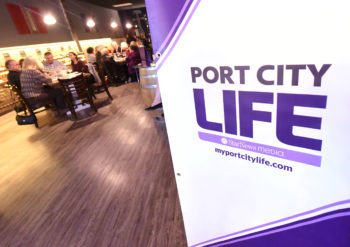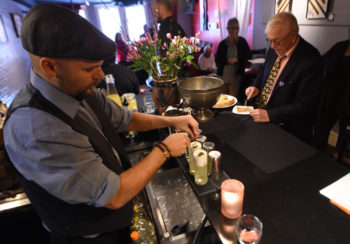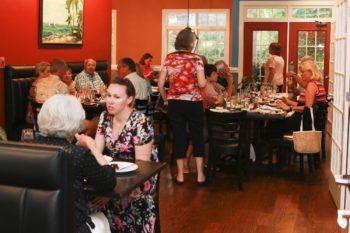By serving a target audience of 45- to 64-year-olds, the Wilmington StarNews increased its readership and digital subscriptions
Pam Sander, Wilmington StarNews,This is a series on Better News to a) showcase innovative/experimental ideas that emerge from the Knight-Lenfest Newsroom Initiative and b) to share replicable tactics that benefit the news industry as a whole. This “win” comes from Pam Sander, executive editor of the Wilmington StarNews and Southeast regional editor for Gannett Co. The StarNews participated in the first cohort of the Table Stakes program run by the University of North Carolina in 2017-18.
Question: What problem were you trying to solve, and why was solving the problem strategically important for your organization?
Answer: First, consider the data we started with:
- Mobile news usage among people ages 50 to 64 doubled since 2013, with about 8 in 10 (79%) getting news that way, according to Pew Research.
- In 2017, more than half (55%) of Americans ages 50 and older were clicking through to news via social media sites, a 10 percent jump from 2016, according to Pew.
- On StarNewsOnline.com, the 45-54 age group was in third place among audience segments, and the 55-64 age group was a distant fourth.
We were losing our connection and value to those readers. If this trend continued, we’d never overcome the largest disruption our industry had ever faced, brought on by the internet.
Through the Knight-Lenfest Newsroom Initiative, we set out to win back and grow the audience for Port City Life: people in the 45-64 age group who want more. They’re not a lot different in character and spirit than when they were young professionals in their 20s, except now they’re wiser and funnier and have the most disposable income among socially active audience segments.
They are stewards of the local community and invested in the communities beyond it. They love socializing via Facebook and Instagram but also in person (“the real way”), with friends for wine or Pilates after work. And now that the kids can drive themselves to practice or are already away at college, these folks no longer need a season’s notice for a weekend getaway.
Q: How is this approach related to Table Stakes (e.g. one of the 7 Table Stakes and/or an outgrowth of the Knight-Lenfest initiative, etc.)?
A: Our approach addresses all seven Table Stakes, but it is most directly related to Table Stake No. 1 (Serve targeted audiences with targeted content).
Q: How did you go about solving the problem?
A: We used a multi-pronged approach that included people from across our organization.
Readership initiatives:
- We began devoting more resources to creating content for this group. Over the past two years, we have transformed our whole newsroom to focus everything on one of five audiences, with Port City Life being one of the most important segments. Since the Table Stakes challenge began, the StarNews increased the amount of content for that audience from an estimated 10% in 2018 to 37% in 2019. Our goal for 2020 is to push the bar up another notch, with 40% of our content being written for them.

Shawn Underwood guided guests through the delicious history of “The Roman Footprint” as Soif de Vin paired food and bites to showcase the regions and their wines during the Port City Life Fine Vines event at Soif de Vin. (KEN BLEVINS/STARNEWS)
- Food and drink are top interest areas for this audience, so we developed a food website, Port City Foodies, and restructured the food reporter’s position to focus more on this audience segment. That reporter’s overall growth in metrics has been beyond phenomenal. For our top four goals combined (pageviews, visitors, social referrals, photo galleries), she finished 2019 up 60% year-over-year, with all tracked categories at 38% and above.
- We used newsletters and Facebook. Via events and email blasts supported by business partnerships, we have nearly 2,000 newsletter subscribers. Our Port City Life Facebook page has more than 1,000 followers, and we’re now testing a Facebook group. The dining newsletter has grown 15% over the past year.
- We launched Port City Life Magazine as a quarterly glossy in 2018 and bumped it to monthly in 2019. That has enabled us to create an “Inner Circle” of business partnerships for parties and giveaways of interest to our audience. We offer a subscription for it that includes a digital subscription to StarNewsOnline.com. The 2019 overall circulation/advertising revenue for this product was more than $700,000.
Experiences/events:
- We created Port City Life Club, which brings together the most loyal and outgoing of the audience at in-person events — like Mimosas After Dark, the Fine Vines education wine series, a signature cocktail competition, and events related to our podcast, Cape Fear Unearthed, which explores the history of the Wilmington area.
Business partnerships:
- We have created a tiered sponsorship program that enables the Port City Life team to be involved from inception to results and includes representatives from advertising and news.
The magazine’s “Inner Circle” program includes profiles on the business as well as an event at their location. An example of that was a Prohibition party at Tails Piano Bar timed with a prohibition episode of Cape Fear Unearthed.
Q: What worked?
A: In addition to the outcome wins noted above, Port City Life overall has been a driver of both audience growth and revenue for us:

Caprice bartender Darren Mulvenna makes his Port City Colada during the Port City Life Signature Cocktail Party at Caprice Bistro in Wilmington, N.C. (Matt Born/StarNews Photo)
- Digital readership growth from this audience segment:
-
- The 45-54 age group has climbed from third to first on StarNewsOnline.com.
- The 55-64 age group has gone from a distant fourth to a tie at second.
- Revenue directly related to these efforts and this audience has gone well above $1 million.
- Digital subscriptions have increased 72%.
Bringing together the advertising department and the newsroom is always a struggle in our industry — because news ethics sometimes prevent partnerships advertising leaders want.
But bringing retail and restaurant businesses and Port City Lifers together has been much simpler than we thought. Residents know the business is sponsoring the event, and they appreciate that we are serving as a conduit to bring them special opportunities.
Another way we have succeeded is by distinguishing sponsored content from advertorials or native advertising. We showed newsroom staff that our content has been sponsored forever — through ads running in print and online. And when the hospital, for example, sponsors a page, we are clear to readers through titling and bylines that the content is sponsored. We also have the right to reject any story, and we stay away from controversial topics. Typically, the content is interesting information that readers want to know.
Q: What didn’t work?
A: We are still working to better define Port City Life Club membership. We are staying the course and not slowing down, despite continued major changes in our company and industry. And some important ideas are still in the inception phase: a community-wide food/drink event, an N.C. food/crafts box and a food truck tracker.
Q: What happened that you didn’t expect?
A: The StarNews was selected to pilot a company-wide GateHouse Media program to transform our newsrooms to audience-driven content and experiences/events. We are entering the second year of that transformation. We developed an exercise to look at visitor numbers for all content over a five-month period. Through that, we know what people are reading — and what they aren’t reading.

Port City Life Club held their Mimosas After Dark event at Famous Toastery in Wilmington. The event featured mimosas, a brunch buffet, and socializing. (Terah Wilson / StarNews)
It’s been eye-opening for staff to learn, in some cases, that 25 percent of their work is responsible for 80 percent of their audience. Our message now to reporters is: If you believe a low-performing topic area is important, then let’s figure out why people aren’t reading it and make an adjustment. Otherwise, you’re just writing for yourself.
Q: What would you do differently now? What did you learn?
A: We would not get so caught up in the weeds. Initially, you’re spending so much time creating the processes and dotting Is and crossing Ts, you forget you can walk and chew gum at the same time. Get some small wins, even while you’re still defining the big picture.
Table Stakes has become a real-life version of the book Our Iceberg is Melting (thanks to McClatchy regional editor Robyn Tomlin for sharing that book with our newsroom years ago). Once you can return to the Starbucks line, read it there. That’s about how long it takes, but its impact can be life-changing. Consider the challenge facing those precious penguins. We were them.
Q: What advice would you give to others who try to do this?
A: First, don’t wait for someone to push you off the cliff. Just jump!
Second, it’s OK to get activities (doing things) confused with goals (getting results) sometimes, as long as they get done.
Finally, don’t expect to accomplish everything at once. This project has taught us to use a phased approach for all initiatives. We are in the third year of our Knight-Lenfest challenge, and though it is a way of life, we continue to advance it to places we could not have seen three years ago.